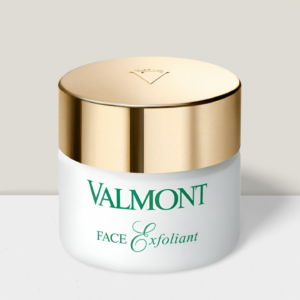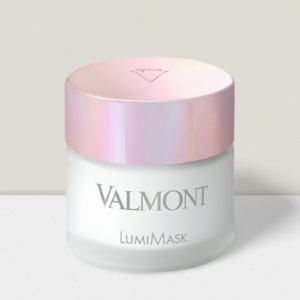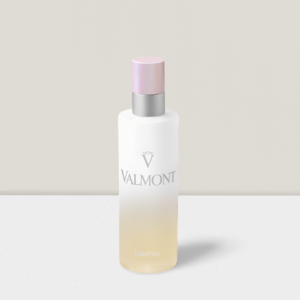Exfoliating
Showing all 3 results
-

Face Exfoliant – Gentle Exfoliating Cream – 50ml
103,00 €Buy in WhatsApp -

LumiMask – Radiance Boosting Mask – 50ml
197,00 €Buy in WhatsApp -

LumiPeel – Radiance Peeling Lotion – 150ml
142,00 €Buy in WhatsApp
The Ultimate Guide to a Face Exfoliating Routine: Tips and Product Recommendations by Skin Expert Christina Korouchtsidi
Exfoliation is an essential part of any skincare routine. Regularly removing dead skin cells helps to reveal a smoother, brighter, and more even complexion. It also enables your other skincare products to penetrate more deeply and work more effectively. In this comprehensive guide, skin expert Christina Korouchtsidi shares her expert tips and product recommendations for a face exfoliating routine that will leave your skin glowing and radiant. Remember that all these products can be purchased with free delivery from our online shop in Cyprus.
Why Exfoliate Your Face?
Exfoliating your face has numerous benefits, including:
- Improved skin texture: By sloughing away dead skin cells, exfoliation helps to smooth rough patches and improve your skin's overall texture.
- Enhanced product absorption: Exfoliating allows your other skincare products to penetrate more deeply, making them more effective.
- Reduced appearance of pores: Regular exfoliation helps to keep your pores clear and less visible.
- Brighter complexion: Exfoliation promotes cell turnover, revealing a fresher, more radiant layer of skin beneath.
- Prevention of breakouts: By unclogging pores and removing excess oil, exfoliation helps to prevent acne and other skin concerns.
Choosing the Right Exfoliator for Your Skin Type
There are two main types of exfoliators: physical and chemical. It's essential to choose the right one for your skin type and concerns.
Physical Exfoliators use granules, beads, or other abrasive materials to physically remove dead skin cells. They are typically suitable for normal, combination, and oily skin types. However, they can be too harsh for sensitive or dry skin.
Chemical Exfoliators use acids (like alpha-hydroxy acids or beta-hydroxy acids) or enzymes to dissolve dead skin cells. They are generally more gentle than physical exfoliators and are suitable for all skin types, including sensitive and dry skin.
The Perfect Face Exfoliating Routine: Step by Step
Step 1: Cleanse Your Face
Before exfoliating, it's essential to start with a clean canvas. Use a gentle cleanser to remove makeup, dirt, and oil from your skin.
Product Recommendation: iS Clinical Cleansing Complex
This lightweight, foaming cleanser effectively removes impurities while maintaining your skin's natural moisture balance. It is suitable for all skin types and can be used daily.
Step 2: Choose Your Exfoliator
Select a physical or chemical exfoliator based on your skin type and concerns.
Product Recommendations:
- Physical Exfoliator: Biologique Recherche Lotion P50
- Chemical Exfoliator: iS Clinical Tri-Active Exfoliating Masque
Step 3: Apply Your Exfoliator
Follow the instructions on your chosen exfoliator to apply it correctly. Generally, for a physical exfoliator, you'll want to use gentle, circular motions to massage the product onto your skin. For a chemical exfoliator, apply it evenly across your face and let it sit for the recommended time before rinsing.
Step 4: Rinse and Pat Dry
After exfoliating, thoroughly rinse your face with lukewarm water to remove any remaining product. Gently pat your skin dry with a clean towel.
Step 5: Hydrate Your Skin
Exfoliation can sometimes leave your skin feeling a bit dry, so it's essential to follow up with a hydrating serum or moisturizer.
Product Recommendation: Biologique Recherche Serum Amniotique E.
This soothing, hydrating serum is perfect for all skin types and provides essential moisture to your skin after exfoliation. It helps to repair, regenerate, and protect the skin while restoring its natural balance.
Step 6: Apply Sunscreen
Exfoliation can make your skin more sensitive to the sun, so it's crucial to apply a broad-spectrum sunscreen with an SPF of at least 30 during the day to protect your skin from harmful UV rays.
Product Recommendation: Colorescience Sunforgettable Total Protection Face Shield SPF 50
This lightweight, mineral-based sunscreen provides broad-spectrum protection without leaving a greasy residue or white cast. It's perfect for daily use and can be worn alone or under makeup.
How Often Should You Exfoliate?
The frequency of exfoliation depends on your skin type and the type of exfoliator you are using. Generally, it's best to start with once or twice a week and adjust based on how your skin reacts. For sensitive skin, it may be best to exfoliate only once a week or even less frequently.
Extra Tips for a Successful Face Exfoliating Routine
- Always listen to your skin: If you experience redness, irritation, or increased breakouts after exfoliating, it could be a sign that you're exfoliating too often or using a product that's too harsh for your skin. Adjust your routine accordingly.
- Don't over-exfoliate: Over-exfoliating can lead to skin irritation and damage. Stick to the recommended frequency for your skin type and chosen exfoliator.
- Incorporate other skincare products: A comprehensive skincare routine includes other essential steps, such as cleansing, toning, and moisturizing. Incorporate these steps into your routine to maximize the benefits of exfoliation.
- Be patient: It may take some time to see the full benefits of regular exfoliation. Keep up with your routine, and you'll eventually notice a smoother, brighter, and more even complexion.
In conclusion, a well-executed face exfoliating routine can make a world of difference in the health and appearance of your skin. By selecting the right exfoliator for your skin type and following the expert tips and product recommendations from skin expert Christina Korouchtsidi, you'll be on your way to a radiant, glowing complexion. Don't forget that you can purchase all the products mentioned in this article with free delivery from our online shop in Cyprus. Happy exfoliating!
